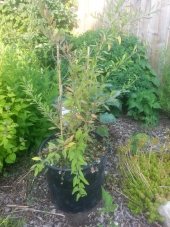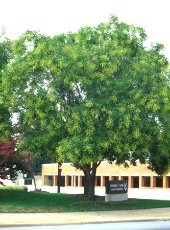Happy New Year, Permies!
Here’s a two-minute video slideshow of construction and the first season of a hugel and a hugel-terrace that students and I made as one of the first projects in our school’s new garden.
I would be grateful for any suggestions regarding what to plant in year 2 or about anything else. Below the video there’s a little more on that.
So, as you can see from the photos, the project was a combination of terracing and hugel-building, with high priority given to long-term stability as well as water and soil capture on this fairly steep hillside. We had a lot of help from different students and other community members, so this labor-intensive approach worked for us, but it might not be right for a single gardener or a farmer with a lot of land to work. I’d love to hear your ideas for which parts of the work do not need to be repeated next time around as well as what we could improve.
While I’d welcome any feedback or questions, I am especially interested in knowing
what people recommend planting on these in year 2.
We are thinking of the following combo, but I’d be grateful for other suggestions.
On the hugel:
Raspberries (3 canes already planted this fall)
Strawberries (2-3 plants planted this fall)
Kale
Swiss Chard
Some type of a nitrogen fixing shrub (maybe shrubby bushclover or northern bayberry)
Nasturtiums, marigolds, and a lupin or two
On the hugel terrace in the back/North:
Peas
Kale
Maybe some beneficial flowers
Our growing zone is probably best described as 6a or 6b. The altitude is about 1300 meters, on a south-facing slope in Western Switzerland, with winter lows that rarely go below -10 celsius, and we get around 120 cm/~48 inches of precipitation in an average year. One of our big wild cards is lots of cool spring weather with pretty good chances of frosts and snows all the way into late May. I think our climate is pretty similar to Sepp Holzer’s Krameterhof, but he may get colder winters because he’s a little more continental than we are. The hugel & hugel terrace behind it are probably in the sun 2/3 to 3/4 of the day and in the shade the rest of the time.
In this first year, we had a pretty successful pea explosion and three weeks of good harvest until powdery mildew started to spread and we pulled the pea plants. The mildew may have been my fault because I watered from above with a watering can during some hot weeks in July/August. As we improve the reach of our hoses, maybe a drip line is in order, although maybe I should just try no watering for a year to see how things do.
I pushed the vertical sticks in to help prop up the heavy pea vines, since these did not really climb the hugel on their own as I hoped they would. The nasturtiums we planted went wild.
Slugs ate all of the squash, zucchini, pumpkin, and lupin starts we planted here, and everywhere else in this new garden within a month or less of those being transplanted. We also had a few unidentified volunteers on the hugel, and I pulled most of these, especially anything resembling grass. We ended up pulling up the nasturtium plants with students in order to harvest the seeds, but next year I might be inclined to cut them off and leave the nasturtium roots in the soil.
I’d love to hear any and all questions, suggestions, as well as both constructive and destructive criticism.

Thanks and happy 2017!
Hugh











